Submitted by WA Contents
Yuji Yamazaki Architecture completes solar-powered Kudadoo Private Island in Maldives
Maldives Architecture News - Jan 03, 2019 - 02:24 20454 views
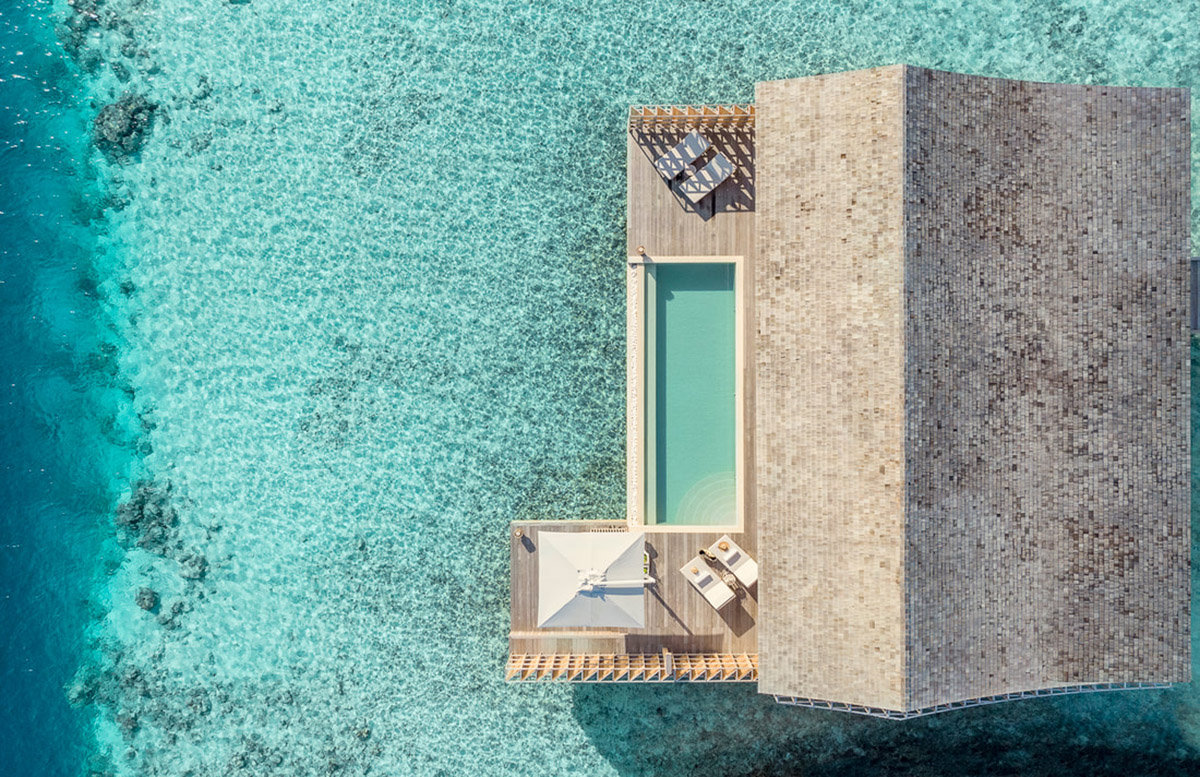
New York-based practice Yuji Yamazaki Architecture has completed a private island in Maldives to promote sustainable tourism through solar-powered architecture.
Named Kudadoo Maldives Private Island, the island is located on Lhaviani Atoll, Maldives and the new Kudadoo Maldives is the unique on this island that you can first discover this luxury resort from the sky, which gives the visitors a stunning impression of the entirety of the architecture on the island.
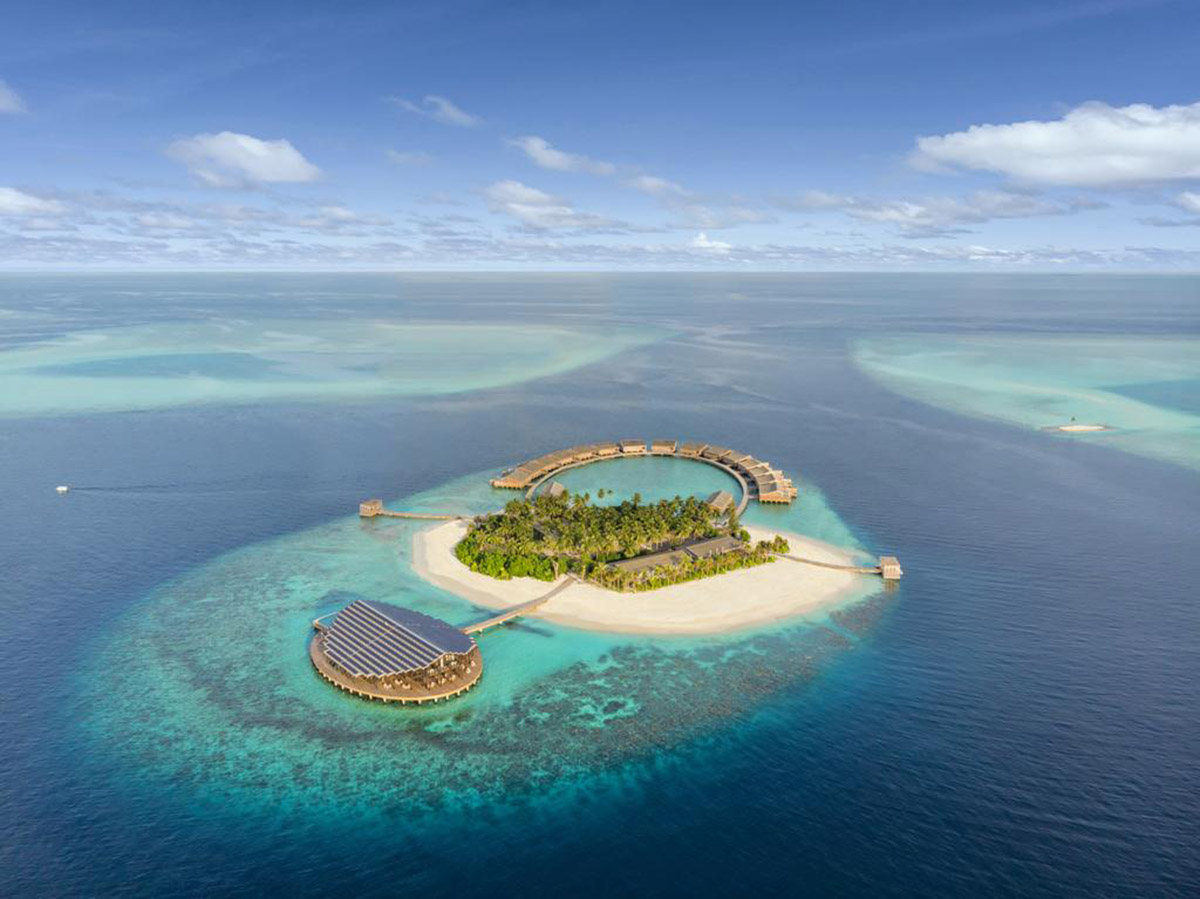
Designed with traditional solar panels, a rarely found in discreet areas in the Maldives, and even if those solar panels don't have any other function in other building, but in Kudadoo, photo-voltaic roof is made visible and becomes the icon of the place by the architects. Visitors may instantly understand the architects' aim to integrate the solar system into overall design concept.
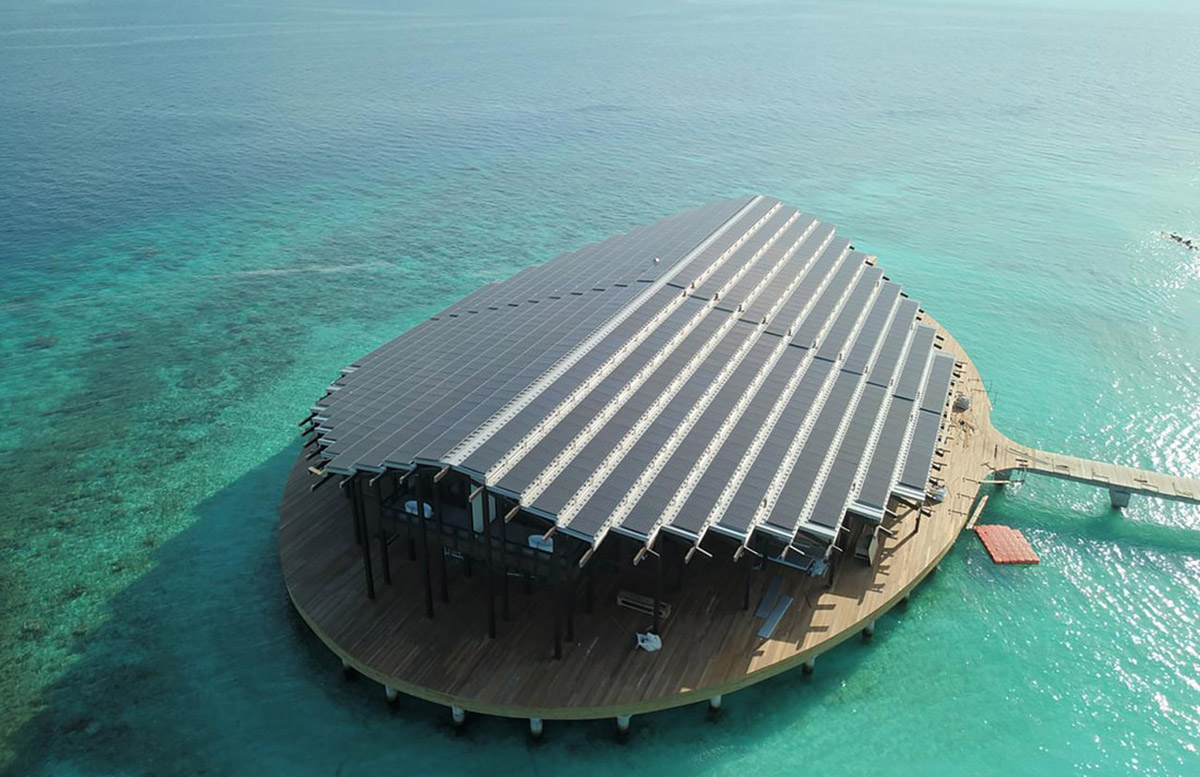
"The burden of global CO2 reduction in the atmosphere lies primarily with a few large economies, but achieving carbon neutrality in this small island nation should be an inspiration for sustainable development in larger countries," said Yuji Yamazaki Architecture. "There may be no better place in the world to showcase the future of sustainable tourism."
"Solar concept should be as informative and persuasive as it is productive. At a glance, visitors can asses the size of solar roof, and then comprehend the relationship to the scale of the resort served by it."

As you get closer, the design of the building reveals geometry that not only maximize production of electricity by its angle, but also minimize consumption of electricity by allowing sun light to come through the gaps between panels, minimizing the use of artificial light during the day.

The system is producing 320kWp of electricity, which suffice to operate entire island without diesel fuel. The initial investment in the solar system to be recovered in 5 years by eliminating the need to import diesel fuel. This should be a fantastic example for other countries with similar climates.
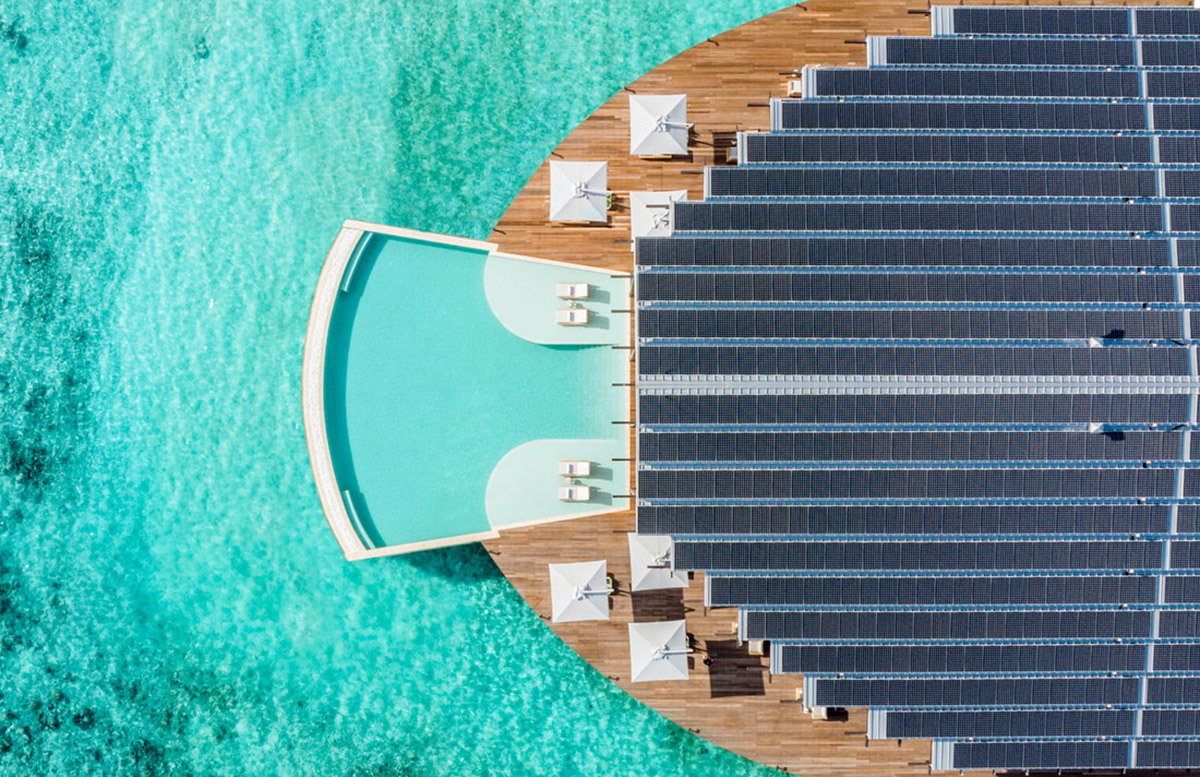
Architecturally, breeze, shade and view were the driving elements for the architects' design in tropical setting. Typical villa or public spaces have operable full height windows strategically placed in opposite walls, advocating natural air ventilation with Maldivian wind.
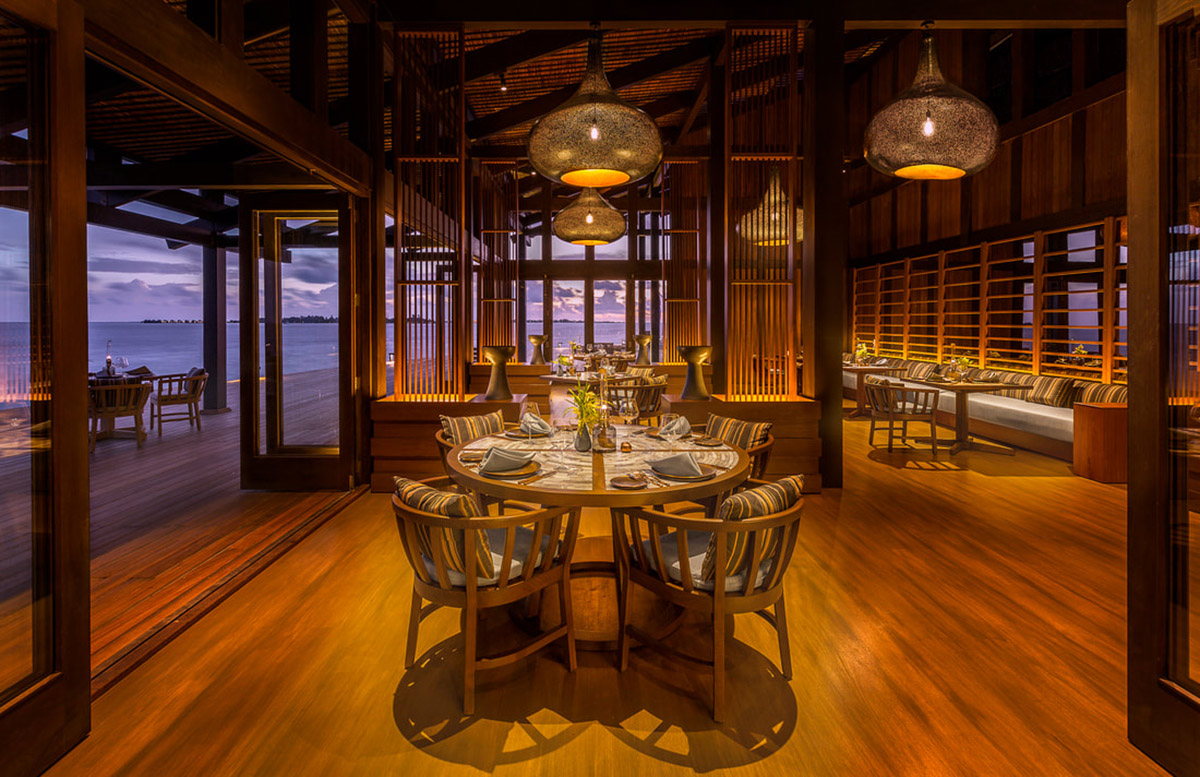
With overhang roofs, umbrellas and canopies, more than 50% of private outdoor deck of all water villas were designed to have at least 5 hours of shaded hours during the day.
"Our “egg crate” privacy screen system between villas gives guests wider frontal ocean view, while blocking views from adjacent villas. Breeze, shade and view create comfort in the nature. That’s what most of the guests seeks in tropical setting," added the architects.
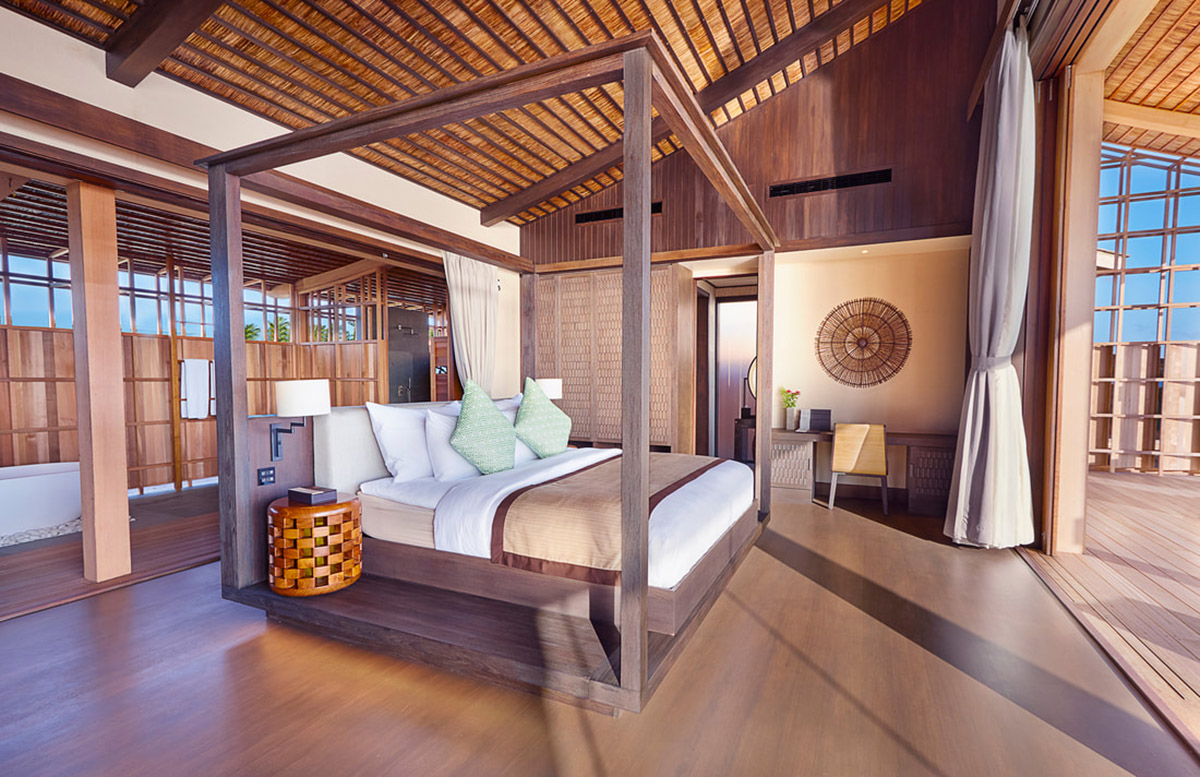
The architects take cues from the surroundings what was there before. The island had beautiful beaches, littoral plantings, coconut groves and interior forests. "The basic plant structure, and the native plant palette were kept intact such as Sea Lettuce, Iron Wood, Coconut Palm, Beach Hibiscus and Screwpine."
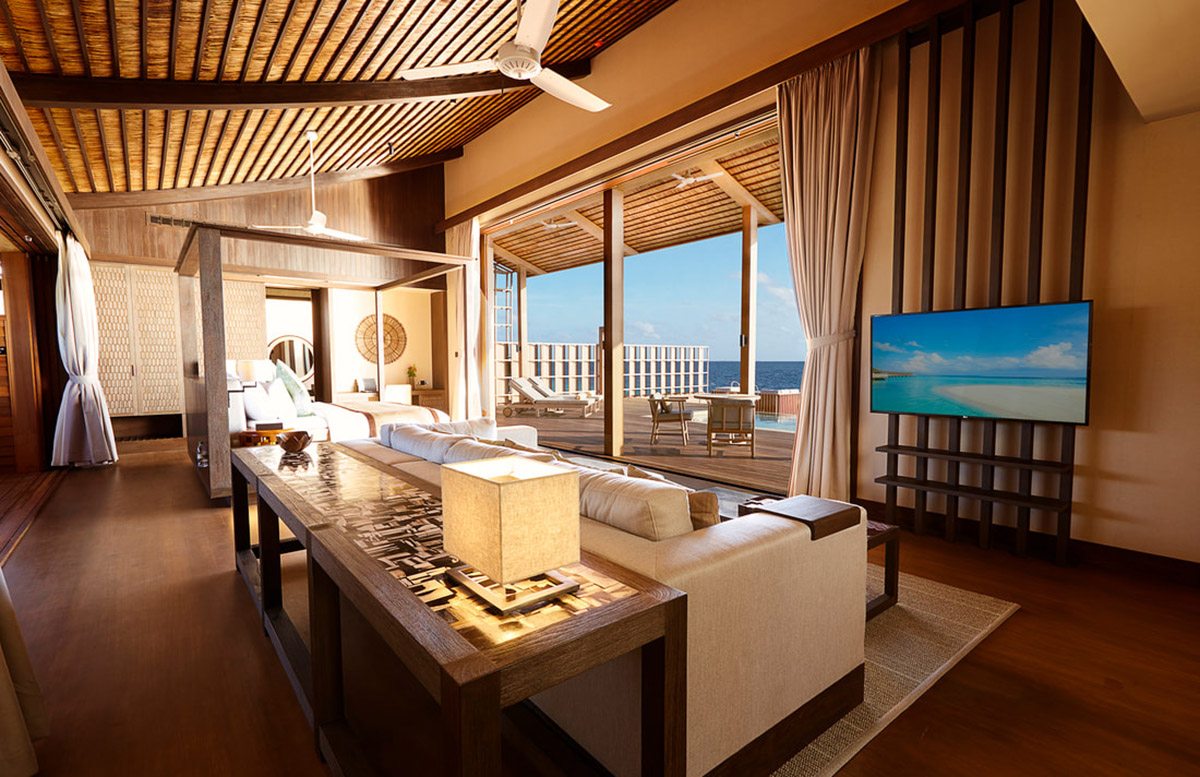
All guest accommodations are placed on the sand lagoon in effort to preserve those vegetations. There is a eco system in place attached to existing islands in the region and it was part of our crucial mission to minimize the change. In autumn, the architects expect to see bird migration come back to the island.
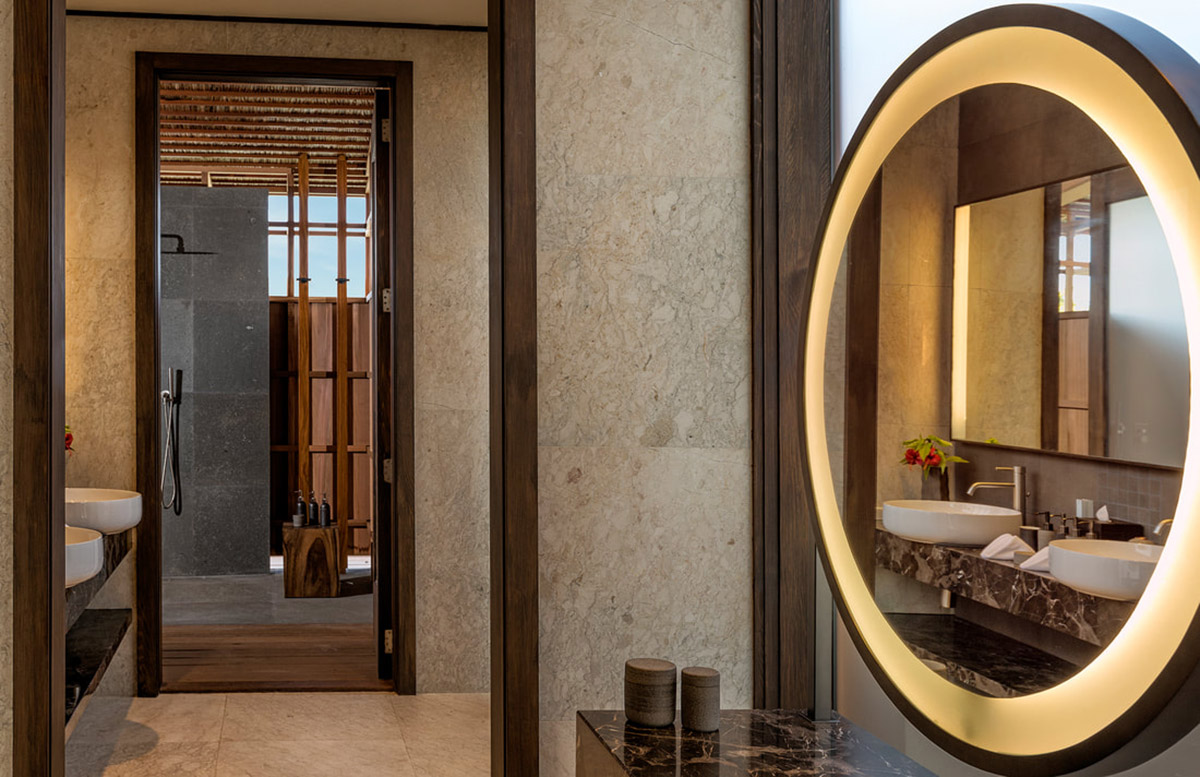
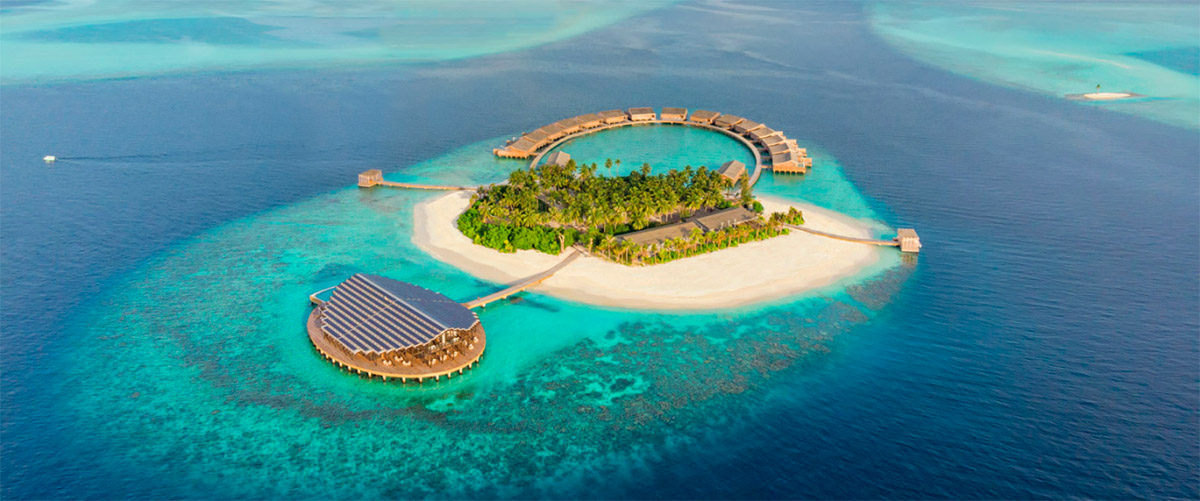
All images courtesy of YYA & Kudadoo Maldives
